|
Originally Published on StartAgain Media
“There are an infinite number of ways in which people suffer. Therefore, there must be an infinite number of ways in which Dharma is available to people.” -a 98-year old Chan Master, as shared with Jon Kabat-Zinn What images do you associate with the word mindfulness? Do you see a fit yogi sitting on a beach in a perfect lotus position, entranced by the surrounding calm? Or are you going to a picture of a saintly Buddhist monk, eyes closed, clutching his prayer beads? Maybe you’re seeing a large group of people gathered at a festival, chanting “Om” in unison. You might even picture someone taking deliberate steps through a garden maze, savoring each pace of a walking meditation. Here’s a new one to try out: Imagine a dance floor full of people. Picture a community of all shapes, sizes, and physical abilities discovering their individual body’s sense of dance through the simplest of rhythmic movements. A gathering of beings, getting down and grooving to every musical genre imaginable. A collection of souls, each with his or her own unique story to tell, having fun and being themselves in the moment, tapping in to the fullness of their human potential. This is dancing mindfulness. In modern Western cultures, we tend to be inhibited when it comes to dancing, fearing that if we don’t dance well, then we really shouldn’t be dancing, victims of the looks are everything mentality. In essence, there’s a whole lot of judging--of others but especially of ourselves--and not a lot of witnessing. What if those of us who have experienced the beauty of mindful practice could work with people to move in a non-judgmental way and stay present? Imagine the healing potential we can help people realize, whether we are working with them in community or clinical settings. Tapping into each individual’s potential for movement, creating beauty, and achieving mindful awareness is what defines a dancing mindfulness practice. Dancing mindfulness helps people in the modern era get back to some of what we lost along the way. Dancing Mindfulness is a wellness practice that grew from my own clinical experiences working with trauma and addiction. Dancing Mindfulness can be learned in a group class and practiced in community, as well as individually; experience in yoga, meditation, or dance is not required to practice. Participants are simply asked to come as they are with attitudes of open-mindedness. Structured classes begin with a facilitator gently leading participants through a series of breathing and body awareness exercises. Following a mindful stretch series, the facilitator leads participants up to their feet for letting go and dancing with the freedom one might tap into by simply turning on some music and dancing around their houses. Many participants find this practice, especially when supported by the energy of other practitioners who are also taking risks, a cathartic experience. Although some find themselves overwhelmed and intimidated, they are encouraged to just acknowledge their experience, without judgment, and can choose to opt out of a certain dance or use their breath and movement as vehicles for moving through the discomfort. Safety is imperative to Dancing Mindfulness practice—facilitators emphasize that no one ought ever feel forced to participate in any component of the practice. The primary attitudes cultivated by mindful practice, as identified by Kabat-Zinn (2011) in his synthesis of mindfulness study, are used as thematic guidelines in structuring classes: acceptance, beginner’s mind, letting go, non-judging, non-striving, patience, and trust. Any of these attitudes may be used as a thematic guide in choosing music for the class, or the facilitator may call upon a series of these attitudes in dancing with an element. The elements of Dancing Mindfulness are networks through which mindfulness can be practiced: breath, body, mind, spirit, sound, story, and fusion of all the elements. A facilitator may elect to start the class working with breath in silence, advising participants that when they use their bodies to come up to their feet and dance, their breaths are with them as a guiding force. Using breath to guide movement is a way, for example, to cultivate the attitude of trust. Each class seems to take on a life of its own, depending on the venue and the students. Some classes seem to naturally cause participants to connect more with other dancers, but this process is to never be forced for the sake of safety. Other classes seem to be focused on personal depth of exploration. Regardless of the form the class takes, we always end on the ground with safety and relaxation, connecting back with the breath, the heartbeat, and often some light chanting. Since the beginning of 2013, I’ve had the privilege of training 52 facilitators in the United States and Great Britain who expressed an interest in the growing practice and a willingness to share it in their communities. It delights me that each facilitator brings her own authenticity to the practice and that no two facilitators lead a Dancing Mindfulness practice in exactly the same way. In the following series of blogs, The Art of Dancing Mindfully, I will be exploring more facets of the Dancing Mindfulness practice and its manifestations in both the group and individual format. See my earlier StartAgain blog, “This is Why I Dance” for a personal reflection on my individualized Dancing Mindfulness practice. I will share a bit more of my own story with developing and taking the Dancing Mindfulness practice into the community, in addition to addressing some of the criticisms I’ve heard that Dancing Mindfulness “isn’t really mindfulness.” I will also share some reflections of other people who’ve benefitted from cultivating a personal and communal Dancing Mindfulness practice. If you’d like to read more about the practice and see some sample videos of how the practice plays out, please go to: www.dancingmindfulness.com. REFERENCE Kabat-Zinn, J. (2011). Mindfulness for beginners: Reclaiming the present moment-and your life. Boulder, CO: Sounds True Books.
0 Comments
Originally published on StartAgain Media
“Mindfulness is the actualization of humanity’s inherent basic goodness.” -Jakusho Kwong-roshi This program’s content is primarily self-discovery or self-care in nature and is not acceptable as continuing education. Several continuing education approval boards, including my own profession’s in my home state, use this line, or some variation of it, to reject programs related to yoga, compassion fatigue, self-care, or any other programs that they deem to be too “new age,” “expressive,” or “experiential.” It’s sad to say that at this point, I’m used to writing appeal letters and making a case for the legitimacy of mindful, experiential learning as valid continuing education for helping professionals. In fairness, not all regulatory continuing education overseers are in the dark ages; just about all of the national accreditation bodies are on board with the legitimacy of mind-body healing and creative approaches to learning. My negative experiences have been largely on the state level. Last year, when I stood before the counselor standards board of my home state, my jaw dropped and I literally froze in shock to hear one of the members say, “We set a dangerous precedent when we call self-care education. Some of the programs you do are more about professionals trying out some of these things (e.g., yoga, dance, meditation), and counselors should be doing that on their own time. Before long, counselors are going to want to count going on retreats and chanting and lighting incense and going to their own therapy as education. Education is education and self-care is self-care.” After taking some deep ujjayi breaths to move from the freeze response, I suggested that if we awarded counselors a certain portion of their required continuing education credits to try out events and programs that teach them how to take care of themselves better, then maybe we wouldn’t have such high rates of burnout. Maybe there wouldn’t be so many ethical violations. Self-care, in the eyes of many of us, is the most valuable continuing education of all. . The anger I experienced in response to their ignorance about the value of self-care as education has made me turn to the literature to further craft some of my arguments. There are over twenty peer-reviewed articles presenting research from both a qualitative and quantitative perspective on the value of self-care, particularly mindfulness meditation training, While I am currently in the process of formally synthesizing and reviewing these for an academic article, I wish to share with you some of the most poignant conclusions from this cannon through my blog: · Promoting mindfulness in psychotherapists-in-training could positively influence the therapeutic course and treatment results in patients (randomized, double-blind controlled study; Grepmair, Mitterlehner, Loew, et al, 2007) · Health care professionals participating in a mindfulness-based stress reduction program (MBSR) were able to more fully identify their own themes of perfectionism, the automaticity of “other focus,” and their tendencies to always enter “fixer” mode; this recognition led to numerous changes along personal and professional domains (grounded theory; Irving, Park-Saltzman, Fitzpatrick, et al., 2014); a similar study that exclusively studied nurses yielded similar findings (Frisvold, Lindquist, McAlpine, 2012) · In an extensive mixed methods research study with working psychotherapists from a variety of theoretical backgrounds, Keane (2013) concluded that personal mindfulness practice can enhance key therapist abilities (e.g., attention) and qualities (e.g., empathy) that have a positive influence on therapeutic training. He contends that mindfulness practice could provide a useful adjunct to psychotherapy training and be an important resource in the continuing professional development of therapists across modalities. In another qualitative study article that demonstrates the positive impact of mindfulness training on therapist trainees, Christopher, Chrisman, Trotter-Mathison, et al. (2011) make one of the wisest contentions that I’ve ever read in peer-reviewed literature: Although self-care is often touted as being important to counselors and psychotherapists, historically little has been done within graduate school to provide future therapists with self-care strategies (p. 318). When I was a graduate student at both the Master’s and Ph.D. level, little, if anything was said about the importance of self-care. In working with graduate students as a mentor and supervisor myself now, it saddens me that the landscape is still pretty bleak in most programs. If you are in a graduate program or have gone through one where self-care and self-discovery was promoted, I would be very happy to hear from you about your experiences and how they impacted your formation as a helper. For those of us who believe in the value of self-care and self-discovery and have experienced its benefits in our professional formation, the responsibility is ours to speak out about how it works. References Christopher, J.C., Chrisman, J.A., Trotter-Mathison, M.J., Schure, M.B., Dahlen, P., & Christopher, S.C. (2011). Perceptions of the long-term influence of mindfulness training on counselors and psychotherapists: A qualitative inquiry. Journal of Humanistic Psychology, 51(3), 318-349. Frisvold, M. H., Lindquist, R., & McAlpine, C. P. (2012). Living life in balance at midlife: Lessons learned from mindfulness. Western Journal of Nursing Research, 34, 265-278. Grepmair, L., Mitterlehner, F., Loew, T., Bachler, E., Rother, W., & Nickel, M. (2007). Promoting mindfulness in psychotherapists in training influences the treatment results of their patients: A randomized, double-blind controlled study. Psychotherapy and Psychosomatics, 76, 332-338. Irving, J.A., Park-Saltzman, J., Fitzpatrick, M., Dobkin, P.L., Chen, A., & Hutchinson, T. (2014). Experiences of health care professionals enrolled in mindfulness-based medical practice: A grounded theory model. Mindfulness, 5, 60-71. Keane, A. (2013). The influence of therapist mindfulness practice on psychotherapeutic work: A mixed-methods study. Mindfulness. DOI: 10.1007/s12671-013-0223-9. Originally Published on StartAgain Media
“Water is the driving force in nature.” -Leonardo da Vinci When I was a child, I rolled my eyes when my health teacher, the talk shows that my mother watched, and yes, my mother herself told me that I needed to drink more water. Consuming 6-8 glasses of such a tasteless substance seemed like a chore. As I’ve aged, my position on water’s tastelessness has gratefully changed, along with my attitude towards it. Throughout my recovery, the importance of water as a vital piece of the wellness puzzle continues to grow, whether I’m drinking it, bathing in it, swimming in it, listening to it, or just appreciating the vast array of metaphors that come with the flow of water. In my career as a trauma educator, I’ve spent the last six years on my feet in front of audiences, talking for three, four, or up to eight hours at a time. When I began this portion of my work in 2008, my resistances about drinking so much water were still pretty high. Before I knew it, I realized that constantly hydrating was a necessity to not only keep my lips moistened but also to keep my body temperature regulated and my energy up. Sipping on coffee, soda, or even juice just didn’t cut it quite like water. I noticed that as I began drinking more water during my talks and classes, my desire for it in other areas of my life intensified—consuming a glass in the morning and a glass in the evening, drinking it with meals, sipping on it during clinical sessions, and even using it a vehicle through which to practice mindfulness. To me, there is no greater joy than just being in the moment with water. As a person who naturally overheats, taking a few mindful sips of water and noticing the slow trickle down my throat and into the rest of my body is one of the best techniques I have for coming back into my body when the literal heat or the heat of stress makes my head float away. On the other side of the spectrum, His Holiness the Dalai Lama discloses in much of his writing that sipping on hot water is a favorite activity of his for calming the nerves. As a young man, he found himself drinking a lot of tea and then one day it struck him that his body didn’t want the tea, his body wanted the warmth. I am also a big believer in the cleansing properties of water, not just literal, but energetic. When I began teaching with more and more frequency, a holistic health care practitioner I see suggested that after every talk I give, dance class I teach, or day’s worth of clients I see, to take a shower. As someone who was raised to shower in the morning or evening, taking showers at 5 or 6 in the afternoon became a bit of a shift in my routine, but it’s one I haven’t regretted. The difference in energy I feel afterwards is incredible. In the process, I’ve also been able to practice gratitude that I have the means to be able to take two showers a day, as it is not lost on me that a good portion of our planet is without a fresh water supply. I recently engaged in a wonderful conversation with the director of a treatment center. In dialoguing about the ways to practice mindfulness in everything, he shared, “I practice gratitude by realizing there are worse ways to start the day than by taking a hot shower.” How right he is. I can probably write a whole new blog post just on the virtues of soaking in a hot tub or taking a walk along the beach or a lake and listening to the music that the water creates. In sum, there are so many ways to practice wellness through getting in touch with the flow of water. Yes, nutritionists and healthy living experts continue to extol the virtues of drinking water, pointing out just how vital it is to hydrate for our health. My contention is that the more you spend time with water and its various form, the more you will realize this truth for yourself. One of the most formative lectures I heard as a student came from a PTSD specialist and retired Israeli Army officer, Elishiva Kaftal. In speaking about the importance of preventative self-care for clinicians she noted, “When you grow up in the Middle East, you know that if you’re drinking the water when you’re thirsty, it’s too late—you have to be constantly hydrating to stay healthy.” What fantastic wisdom that can be appreciated both literally and figuratively! Originally published on StartAgain Media
“Dance, when you're broken open. Dance, if you've torn the bandage off. Dance in the middle of the fighting. Dance in your blood. Dance when you're perfectly free.” -Rumi Dancing is one of the many outlets that we, as helpers, healers, and people on the road of recovery have at our disposal for emotional cleansing. For me, it’s been the ultimate channel for self-care and burnout prevention. Let share a very personal story of how I experienced the benefits of mindfulness practice, specifically dancing mindfulness practice, to cope with a loss in my own life. Loss is a wound, a trauma, which needs healing attention like any other wound, especially losses that shake us to the cores of our being. When I had almost a decade sober, many years of practice as a trauma counselor, and a great deal of experience practicing yoga, I experienced a loss that, at the time, I thought could not be healed... all while I was expected to keep up a busy schedule working and teaching. Shortly after my first marriage ended, I reconnected with an old high school boyfriend, a dear figure from my past who I long regarded as the one who got away. We had a passionate, fiery love affair for the better part of a year, and everything in me really believed that some cosmic force was bringing each other back into our lives. The way I was able to open my heart up to him again surprised even me, so when he made it very clear to me that he could not commit to giving me what I wanted because he never saw himself getting married or having children, I was crushed. It was the ultimate case of two people who loved each other very deeply, but could not be together because of who we, respectively, were as people. The grief I experienced when this relationship crumbled was unlike any I had ever experienced; worse than any death, even worse than my divorce. At one point I feel into a very deep depressive episode that seriously got in the way of my ability to function in my work life. I remember using my support network a great deal during this period, being honest about my perceived professional impairment, and the support was imperative for getting me through—plus some much needed down time to just do the bare minimum of work and let myself grieve. Looking back at it now, I can clearly identify that my work with mindfulness practices, especially moving mindfulness meditations like yoga and dance, and even the simple practices like breath work helped me to ride out this loss and adapt to it without letting it destroy me. When the feelings came, I surfed the waves of emotion, breathing through my tears, making a commitment not to judge myself at any juncture for feeling what I was feeling. The dancing mindfulness I practiced, even prior to formally developing the Dancing Mindfulness practice helped me transform my grief into beauty, and from this I was able to move forward. In the spare room at my house, which once served as my ex-husband’s office, I committed to dancing each night in a mindful way, choosing music that helped me dig into the emotion and be with it. At times, I moved with silence or sat in silent contemplation, allowing a healing fusion to take place. Indeed, the easiest way out of the emotional storm was through it. I practiced letting go of that great love of my life, and as a result, the path was cleared and the heart was open for my current husband to come into my life. We share a passionate love and a complementary vision of life, a manifestation of the trust I developed in practicing mindfulness. As much as I believe in formal psychotherapy, I don’t think that anything could have helped me grieve the loss of that relationship as effectively as mindfulness practice did. |
Dr. Jamie MarichCurator of the Dancing Mindfulness expressive arts blog: a celebration of mindfully-inspired, multi-modal creativity Archives
September 2022
Categories
All
|
Contact |
Memberships & Affiliations |
|
Please direct all inquiries to:
[email protected] © Mindful Ohio & The Institute for Creative Mindfulness, 2021 Terms of Use Privacy Policy |
Dancing Mindfulness/The Institute for Creative Mindfulness is an organizational member of the International Association of Expressive Arts Therapists, the Dance First Association, and NALGAP: The Association of Gay, Lesbian, Bisexual, Transgender, Addiction Professionals and Their Allies; Dancing Mindfulness proudly partners with The Breathe Network and Y12SR: The Yoga of 12-Step Recovery in our shared missions.
|
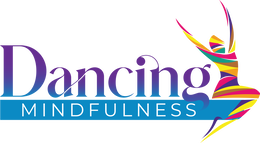
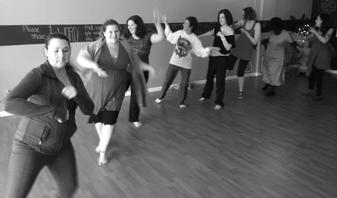
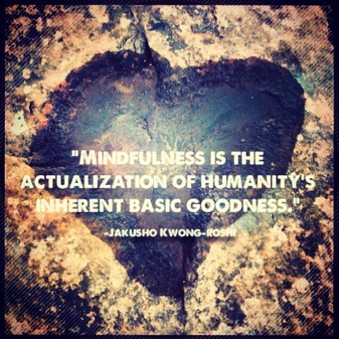
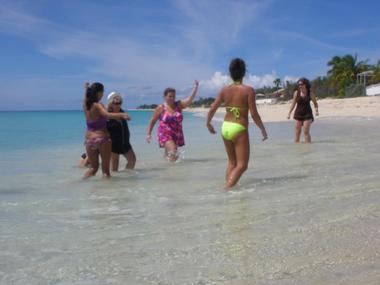
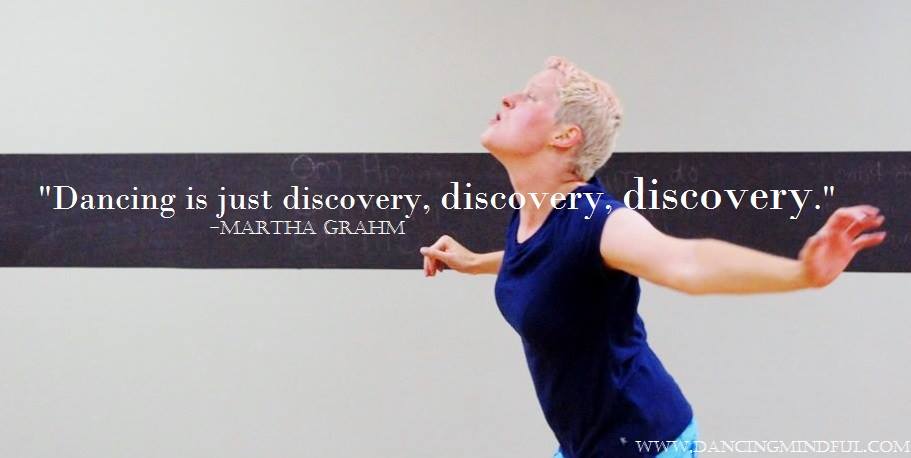
 RSS Feed
RSS Feed